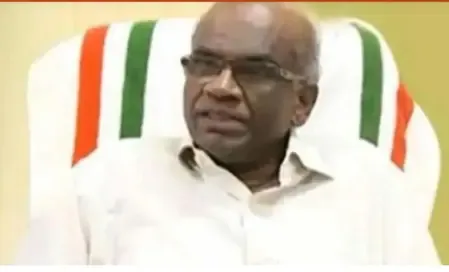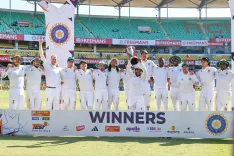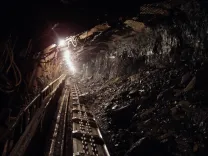What is the Coldest Night Recorded in Srinagar This Season?

Synopsis
Key Takeaways
- Srinagar recorded its coldest night at minus 3.9 degrees Celsius.
- Dry weather is expected until December 10.
- Winter vacations for students will commence soon.
- The traditional Pheran is commonly worn for warmth.
- 'Chillai Kalan' will start on December 21.
Srinagar, Nov 26 (NationPress) A cold wave has firmly established itself across the Valley, as Jammu and Kashmir's Srinagar city recorded the coldest night of the season thus far at minus 3.9 degrees Celsius.
Officials from the Meteorological Department have indicated that dry weather is expected to persist until December 10, with further drops in minimum temperatures anticipated during this period.
According to Meteorological Department officials, "Srinagar city has recorded minus 3.9 degrees Celsius today, marking the coldest night of this season. Meanwhile, Gulmarg saw a minimum of zero degrees, and Pahalgam recorded minus 4.6 degrees Celsius."
Minimum temperatures in other areas included 8.8 degrees Celsius in Jammu city, 8.5 degrees Celsius in Katra, 4.6 degrees Celsius in Batote, minus 0.7 degrees Celsius in Banihal, and 0.5 degrees Celsius in Bhaderwah.
As temperatures plummeted below freezing, a weak winter sun emerged in the hazy sky of the Valley, providing little warmth for morning walkers and early risers.
With cold winds sweeping down from snow-covered mountains, school children are struggling to wait for buses in the biting morning chill.
Authorities have declared that winter vacation for students up to the 8th standard will commence on December 1, while classes 9 to 12 will begin their winter break on December 11.
People have begun wearing the traditional Kashmiri winter garment known as the 'Pheran', a warm tweed overcoat.
In both rural and urban areas, many individuals use an earthen firepot, woven from willow, filled with live charcoal, held under the Pheran to fend off the winter cold.
The harsh winter period known as 'Chillai Kalan' will initiate on December 21 and conclude on January 30 each year.
During this challenging time, water bodies in the Valley freeze, complicating daily life.
In winter, residents often have to create fires around frozen water taps to access water.
During 'Chillai Kalan', the temperature gap between maximum and minimum readings becomes minimal, with night temperatures plummeting to between minus 5 and minus 7 degrees Celsius, while daytime highs rarely reach double digits.









